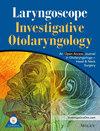Microsurgical Robotic System for Myringoplasty: Feasibility Study
Abstract
Objective
Otological surgery requires exceptional precision and advanced surgical skills, particularly for procedures involving the tympanic membrane and middle ear structures. Microsurgical robotic systems have shown promise in enhancing surgical accuracy by minimizing tissue trauma and enabling remote operations. We aimed to evaluate the feasibility and effectiveness of a microsurgical telerobotic system for performing myringoplasty using an animal model.
Methods
This feasibility study was conducted with five rabbits (10 ears). Two surgeons performed myringoplasty using a microsurgical robot to create tympanic membrane perforations in both ears of the five rabbits. Subcutaneous tissue grafts were subsequently placed robotically to facilitate healing. Surgical video analysis of precision and postoperative observations of the tympanic membranes were conducted. The primary outcomes included (1) accuracy of tympanic membrane perforation and closure, (2) feasibility of robotic-assisted tissue graft placement, and (3) the success rate of tympanic membrane closure over a 2-week period.
Results
Using a microsurgical robot, perforations were successfully created in the pars tensa of the tympanic membranes in 10 ears of five rabbits. Ten weeks after the procedure, the tympanic membrane perforations had closed, with subcutaneous tissue remaining at the repair sites. By week 2, complete closure of all perforation sites was observed.
Conclusions
This study is the first to demonstrate the feasibility of using microsurgical robots for myringoplasty. Robotic systems can be effectively integrated into otological procedures to potentially expand their applications to complex surgeries such as tympanoplasty, stapedotomy, and cochlear implantation. The applicability in humans should be evaluated in future studies.
Level of Evidence
V.

 求助内容:
求助内容: 应助结果提醒方式:
应助结果提醒方式:


